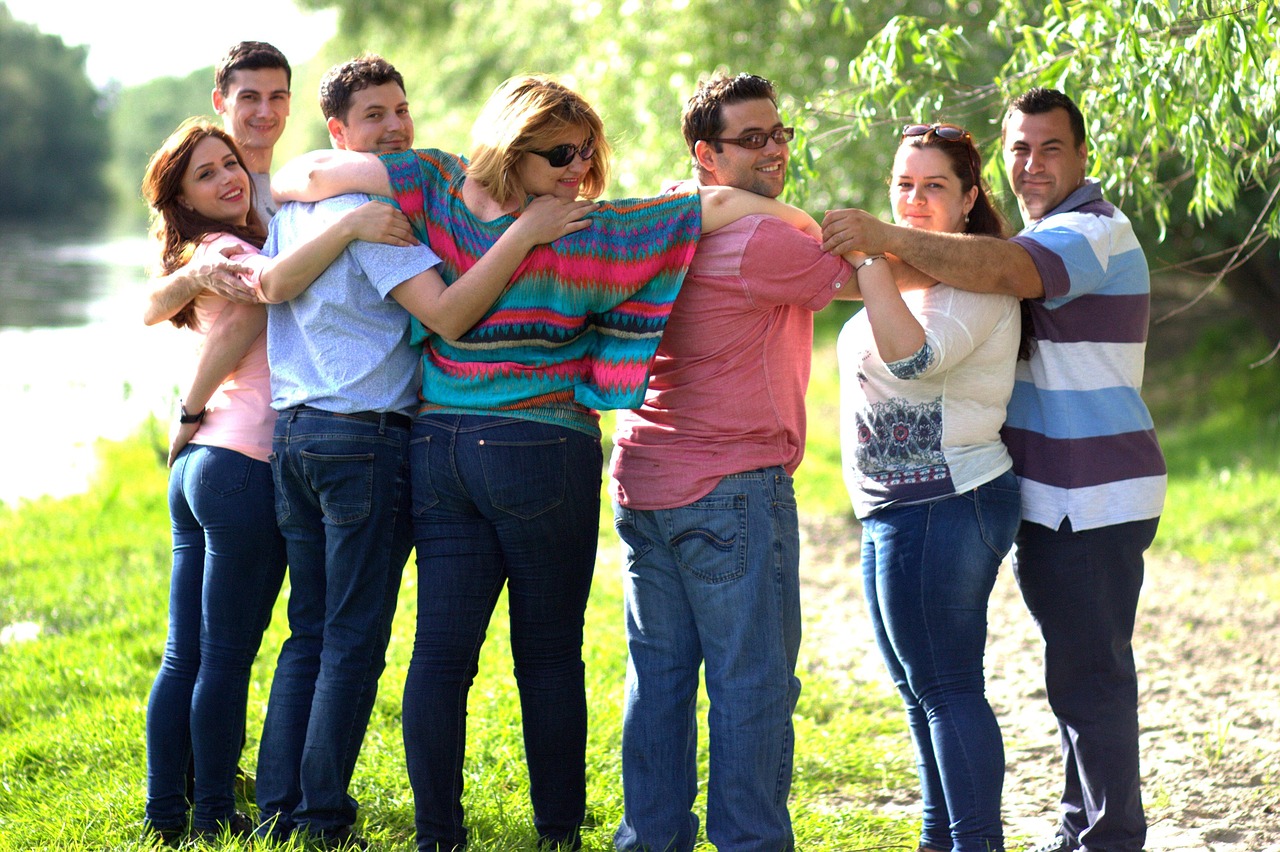Friendships are vital threads in the tapestry of our lives, offering support, joy, and a sense of belonging. However, like any relationship, friendships can face challenges. Navigating these friendship issues is crucial for maintaining healthy and fulfilling connections. Whether it’s dealing with conflict, navigating distance, or addressing changing needs, understanding the common pitfalls and developing effective strategies can strengthen your friendships and enhance your overall well-being.
Identifying Common Friendship Issues
Friendships aren’t always smooth sailing. Recognizing potential problems early on can prevent minor bumps from turning into major rifts. Many issues stem from misunderstandings, unmet expectations, or changes in life circumstances.
Communication Breakdowns
Miscommunication is a primary culprit behind many friendship issues.
- Example: Imagine Sarah assumes her friend Emily is upset with her because Emily hasn’t responded to a text for a few days. Sarah starts avoiding Emily, creating further distance. In reality, Emily was simply busy with a family emergency and didn’t have time to reply.
- Solution: Open and honest communication is key. Instead of assuming, Sarah could have reached out to Emily to check in. “Hey Emily, I noticed you’ve been quiet lately. Is everything okay?”
- Actionable Takeaway: Actively listen and clarify misunderstandings before they escalate. Don’t rely solely on assumptions.
Unmet Expectations
Expectations can silently shape our friendships, and when those expectations aren’t met, disappointment can arise.
- Example: Mark always expects his friend David to be available for spontaneous outings, but David increasingly prioritizes his family commitments. Mark feels neglected, while David feels pressured to constantly accommodate Mark’s expectations.
- Solution: Discuss your expectations openly and honestly. Understanding each other’s priorities and limitations can foster empathy and prevent resentment.
- Actionable Takeaway: Communicate your needs and boundaries, and be receptive to your friend’s perspective.
Jealousy and Competition
A healthy dose of friendly competition can be motivating, but excessive jealousy can poison a friendship.
- Example: Lisa feels envious of her friend Jessica’s career success and starts making subtle digs about Jessica’s long hours. Jessica, in turn, feels belittled and starts distancing herself from Lisa.
- Solution: Acknowledge your feelings of jealousy and address them constructively. Focus on celebrating your friend’s achievements and finding inspiration in their success. Reflect on your own goals and aspirations to redirect the energy positively.
- Actionable Takeaway: Practice gratitude for what you have and celebrate your friends’ successes without comparing them to your own life.
Navigating Conflict in Friendships
Disagreements are inevitable in any close relationship. How you handle those disagreements can make or break a friendship.
Addressing the Issue Directly
Avoiding conflict might seem easier in the short term, but it can lead to festering resentment.
- Example: Ben is constantly late when meeting his friend Chris. Chris avoids addressing the issue directly, but internally gets increasingly frustrated. Over time, this small annoyance builds into a bigger feeling of resentment.
- Solution: Gently address the issue as soon as possible, before it escalates. Use “I” statements to express your feelings without blaming your friend. “I feel disrespected when you’re consistently late because it feels like my time isn’t valued.”
- Actionable Takeaway: Choose a calm and neutral setting to discuss the issue. Focus on the behavior, not the person.
Active Listening and Empathy
Truly understanding your friend’s perspective is crucial for resolving conflict.
- Example: When Emily confronts John about his recent negativity, John interrupts her and defends his behavior. He doesn’t allow her to fully express her feelings, making her feel unheard and dismissed.
- Solution: Practice active listening. Pay attention to your friend’s words, body language, and tone of voice. Ask clarifying questions and summarize their points to ensure you understand their perspective. Show empathy by acknowledging their feelings. “I understand that you’ve been feeling stressed lately.”
- Actionable Takeaway: Focus on understanding your friend’s point of view, even if you don’t agree with it.
Finding a Resolution
The goal isn’t always to “win” the argument, but to find a mutually acceptable solution.
- Example: After a disagreement about vacation plans, two friends can’t agree on where to go. One friend only wants to go to the beach, and the other only wants to hike in the mountains.
- Solution: Brainstorm potential solutions together. Consider compromising by alternating between beach vacations and hiking trips in the future, or finding a destination that offers both options.
- Actionable Takeaway: Be willing to compromise and find a solution that respects both your needs and your friend’s needs.
Managing Distance and Changing Life Stages
Friendships can evolve as life throws curveballs. Distance and changing priorities can create challenges, but they don’t necessarily have to signal the end of a friendship.
Maintaining Connection Despite Distance
Moving to a new city or state can strain even the strongest friendships.
- Statistic: A study by Pew Research Center found that 56% of adults have at least one close friend who lives far away.
- Solution: Make a conscious effort to stay connected. Schedule regular video calls, send handwritten letters, or plan occasional visits. Utilize social media to share updates and stay involved in each other’s lives.
- Actionable Takeaway: Schedule regular communication, even if it’s just a quick text message.
Adapting to Changing Priorities
As people get married, have children, or pursue demanding careers, their priorities inevitably shift.
- Example: A group of friends who used to spend every weekend together now find it difficult to coordinate schedules due to family and work commitments.
- Solution: Be understanding and flexible. Accept that your friend’s availability may change and adjust your expectations accordingly. Focus on quality over quantity. Instead of expecting weekly get-togethers, prioritize occasional meaningful interactions.
- Actionable Takeaway: Communicate your needs and adjust your expectations to accommodate your friend’s evolving life stage.
Making New Friends
It’s healthy to expand your social circle, even while maintaining existing friendships.
- Example: Joining a new book club, sports team, or volunteer organization can introduce you to like-minded individuals.
- Benefits:
Exposure to new perspectives
Opportunities for personal growth
Reduces pressure on existing friendships
- Actionable Takeaway: Seek out activities and groups that align with your interests to meet new people and broaden your social network.
Recognizing and Addressing Toxic Friendships
Not all friendships are healthy. Recognizing the signs of a toxic friendship and taking steps to protect yourself is essential for your well-being.
Identifying Toxic Behaviors
Toxic friendships are characterized by negativity, manipulation, and a lack of support.
- Signs:
Constant criticism or judgment
Jealousy and possessiveness
Gossip and backstabbing
One-sided relationships where you give more than you receive
Feeling drained or emotionally exhausted after spending time with the friend
Manipulation or control
- Actionable Takeaway: If you consistently experience these signs in a friendship, it may be time to re-evaluate the relationship.
Setting Boundaries
Establishing clear boundaries is crucial for protecting yourself from toxic behaviors.
- Examples:
Limiting contact with the friend
Refusing to engage in gossip
Asserting your needs and saying “no” when necessary
Creating physical and emotional distance
- Actionable Takeaway: Clearly communicate your boundaries and enforce them consistently.
Ending the Friendship
Sometimes, despite your best efforts, a toxic friendship cannot be salvaged.
- Considerations: Prioritize your well-being. If the friendship is consistently detrimental to your mental or emotional health, ending the relationship may be the best option.
- Strategies:
Gradually distance yourself from the friend.
Have an honest conversation (if you feel safe and comfortable doing so).
Seek support from other friends or a therapist.
- Actionable Takeaway: Prioritize your mental and emotional well-being. It is okay to end a friendship that is harmful to you.
Conclusion
Friendships are invaluable assets in our lives, enriching our experiences and providing essential support. However, navigating friendship issues requires open communication, empathy, and a willingness to adapt to changing circumstances. By understanding the common pitfalls, developing effective strategies for resolving conflict, and recognizing the signs of toxic relationships, you can cultivate healthier, more fulfilling friendships that contribute to your overall well-being. Remember that friendships evolve, and it’s okay to re-evaluate your relationships as your needs and priorities change. By investing in your friendships and addressing issues proactively, you can nurture these vital connections and enjoy the lasting benefits of strong, supportive relationships.




